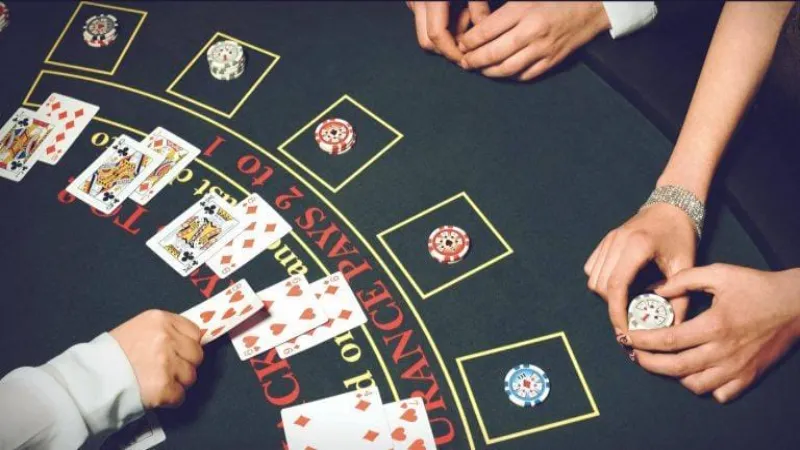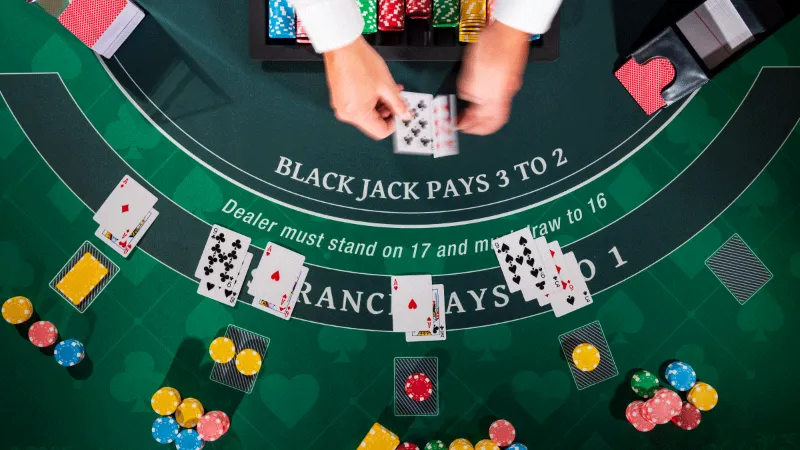Blackjack, also known as 21, is a popular card game played with a standard deck of 52 cards. Despite its simple rules, strategizing is crucial for success in this game. This phjoy ph article offers crucial details on how to play Blackjack effectively.
Basic Rules of Blackjack

In Blackjack, players use a single deck of 52 cards. At the beginning of each round, each player receives two cards and can draw additional cards during the game. The goal is to have a hand with a total that is closer to or exactly 21 than the dealer’s hand. Players must calculate the values of their cards to reach this goal.
Dealing Cards in Blackjack
Blackjack games vary in the specific rules for dealing cards and the number of players involved, typically ranging from 2 to 8. Players place bets, and if they win, they receive winnings that exceed their initial bet. In the case of a loss, they forfeit their entire bet to the dealer. To qualify as the dealer, a player must have bankroll equivalent to the total bets placed by all other players. The initial deal and the subsequent draws create an engaging and suspenseful experience as players compete against the dealer.
Card Values in Blackjack
When playing Blackjack, players base their decision on whether to draw additional cards on the total value of their first two dealt cards. The scoring rules in Blackjack are as follows:
- Numbered cards (2-10): Each card carries a point value corresponding to the number on the card.
- Face cards (J, Q, K): Each of these cards counts as ten points.
- Ace (A): This card is versatile, and its value can be either 11, 10, or 1, depending on the situation.
- Total: The sum of all card values in a hand is the final score.
Effective Blackjack Strategies

Once you understand the gameplay, you can easily calculate your score at each stage and develop your own strategies. These strategies may include decisions on when to hit (draw) or stand (stop) and how to manage your bets. The gameplay is typically divided into two distinct phases:
Phase 1: Calculating Your Initial Score
In the first phase, players calculate the total score of their two initial cards. If players have either of the following, they should stand and collect their winnings:
- Blackjack: Two Aces
- 21: An Ace and a face card (K, Q, J, or 10)
If the dealer has either of these, they will win all bets unless a player also has a Blackjack or a higher score.
Phase 2: Drawing Additional Cards
After evaluating the initial two cards, the next step involves drawing additional cards. Players have the option to hit and draw more cards after the initial two. However, they can also choose to stand, ensuring their score remains between 16 and 21. In Blackjack, the following terminologies apply:
- Soft hand: A hand with a score below 16.
- Hard hand: A hand with a score between 16 and 21.
- Bust: A hand with a total over 21. In this case, the player loses and can draw no further cards.
The play begins on the dealer’s left and proceeds clockwise around the table. Each player has the opportunity to hit until they decide to stand. All players, except the dealer, must reach a score of 16 or higher before the dealer checks their hand. If they do not, the player loses, and the dealer collects their bet. The dealer then compares their hand to the remaining players. The dealer pays out winnings to players who score higher, and in the case of a tie, it is considered a push.
Special Situations in Blackjack

The following are special situations that may occur during a game of Blackjack:
- Natural: A player wins instantly if they have a total of 21 or less from their first two cards. However, if both players have a natural, the player with the lower score wins.
- Bust out: If both players exceed 21, the player with the lower score wins. However, a player who busts with a score over 21 still beats a player who stands with a score under 16.
Tips from Blackjack Experts
Experienced Blackjack players often utilize the following strategies and tips:
- Handling 16-17: Determine whether to hold or hit based on the number of cards in your hand to optimize your winning chances.
- Hitting when the Dealer has 2: Choose to hit to increase your chances of winning if the dealer only has two cards showing.
- Observing Players with 3-4 Cards: Monitor their previous plays to predict whether they are likely to continue drawing.
- Dealing with Naturals or Busts: If the player has drawn five cards, consider the chances of a natural or bust and decide whether to hit or stand.
- Pushing with 18-21: If you have a score between 18 and 21, determine whether to push, taking advantage of your strong hand.
Conclusion
Combining sound card counting, efficient gameplay, and risk management is key to success in Blackjack. By carefully considering these factors, you can enhance your chances of winning. May your next hand be a winning one!

